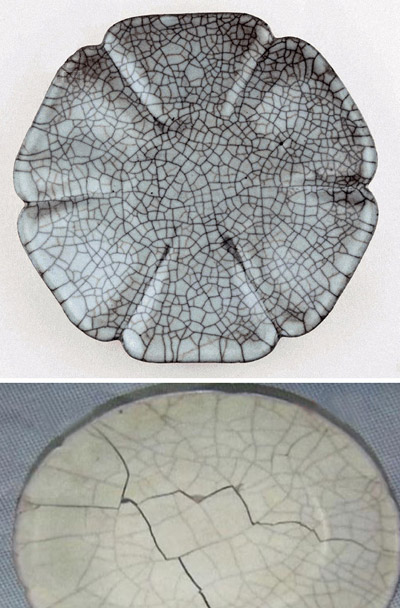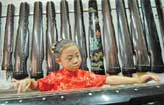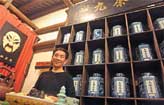Society
Museum: broken plate not shown on website
Updated: 2011-08-03 07:57
By Yan Jie (China Daily)
BEIJING - An ancient porcelain plate that was accidentally destroyed was an invaluable part of the Palace Museum's collection but not the best piece of its type, museum officials said on Tuesday.
 |
|
Top: An ancient porcelain plate dating to the Song Dynasty (960-1279) as it looked before it was accidentally broken. Bottom: A screenshot from China Central Television (CCTV) shows the plate was broken into six pieces. [Photo/China Daily] |
Nor was it, contrary to critics' contentions, the treasure shown on the museum's website, said Feng Nai'en, a spokesman for the Palace Museum, also known as the Forbidden City.
"The porcelain plate shown on the official website is another piece," he said, dismissing speculation that the museum was presenting a shoddy substitute in its advertisements.
Museum officials admitted on Sunday that a piece from the Forbidden City's invaluable collection of Chinese ceramics dating to the Song Dynasty (960-1279) had accidentally been broken into six pieces while scientific research was being conducted on it.
The museum identified the treasure as "the celadon plate with a mouth in the shape of mallow petals" and said it came from the Ge kiln, one of the five most famous kilns in the Song Dynasty.
Lu Chenglong, deputy head of the museum's ancient relics department, said the two plates shared a similar shape and the same name. They were also both considered to be first-grade cultural relics, according to official rankings of Chinese cultural relics, although the one that was destroyed was in fact less precious than the other.
Doubts about the veracity of the museum's advertising emerged after China Central Television broadcast pictures of the damaged plate on Monday. Some viewers complained that the images were not consistent with what they had seen posted on the museum's website.
Feng said such speculations are groundless.
"They are different pieces and the one (on display) is intact," Feng said.
The Forbidden City contains 63 ancient ceramic pieces stemming from the Ge kiln, said Lou Wei, head of the museum's relics management department. The collection contains 57 first-grade relics.
Among Chinese ceramics, those produced in the Song Dynasty are the most coveted by collectors.
The State Administration of Cultural Heritage and the Ministry of Culture has meanwhile conducted an investigation into why the ancient plate was broken. The final results suggest the cause was museum workers' improper use of certain testing equipment, according to a statement published on Tuesday on the administration's website.
The two departments have asked the museum to better protect its displays, the statement said, noting that the State Administration of Cultural Heritage will begin trying to gauge how secure museum displays are throughout the country.

Specials

Carrier set for maiden voyage
China is refitting an obsolete aircraft carrier bought from Ukraine for research and training purposes.
 Photo
Photo  Video
Video

Pulling heart strings
The 5,000-year-old guqin holds a special place for both european and Chinese music lovers

Fit to a tea
Sixth-generation member of tea family brews up new ideas to modernize a time-honored business